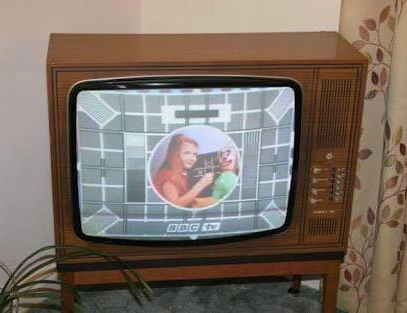In a living room in Kogarah Bay, back in 1983, seven-year-old Karen throws her arms in a huff, stamping her bare feet on the hideous shag carpet in defiance. She had been caught sneaking her way behind the lounge yet again, desperate to watch a television screening of ET: The Extra-Terrestrial.
Whether she wasn’t allowed because of the content or time of day she can no longer remember, but thirty-four years later and Karen still winces at the memory of what came next:
“Oh, boy did I cop it for that behaviour, mum chased me down the hall with the feather duster! I probably shouldn’t tell you that- to be fair you could give your kids a whack back then…”
It was the early 80s and television was thriving in the city of Sydney, with the recent introduction of the country’s second national public broadcaster, SBS, and the relaunch of Rupert Murdoch’s Network Ten (TelevisionAU 2016). Karen remembers having access to a range of channels in Kogarah, on the family’s boxy colour set.

(Source: http://www.oldtechnology.net/colour.html)
“It sat in the living room like a piece of furniture, propped up on wooden legs…we had access to all the local channels, but as a kid, my job was to change the station and be quiet when the news was on.”
The freedom that came with city programming was soon to be no more when, in 1984, the family decided to uproot in search of a ‘country life’. Packing their bags, and the TV, the Hooley’s moved into a farmhouse in rural Wingello.
“Suddenly, we went from having around eleven reliable channels to only 5A and WIN, and that was on a good weather day!”
Karen’s childhood experience was like that of hundreds of children in rural Australia throughout the 1980s. Whilst ‘city slickers’ enjoyed a mostly reliable connection, and a variety of program options, much of rural Australia had little to no television access in the early 80s. The introduction of domestic satellite technology, AUSSAT, from 1985 to 1987 brought vastly improved services to both regional and rural communities (Fowler 1987, p.1).
Despite the significant downgrade in media variety, Karen doesn’t believe she took the loss too much to heart.
“Television wasn’t a central part of my life in Sydney or Wingello, it was more of a night-time privilege…I preferred to spend my days learning to ride horses and exploring the paddocks with my younger brother.”
As she mentions her brother Karen chuckles slightly, remembering the time she really felt the sting of the feather duster. Laying on her brother’s bunk beds, the two children would often sneak a peek at the old black and white set in their parent’s bedroom.
“I was on the bottom bunk, and my brother wouldn’t stop making noise…In fear of being caught, I kicked up at the old foam mattress right as he leant over, catapulting him onto the floor! I’ll never forget mum’s screams: ‘You’ve killed him!’”
Whilst reminiscing, Karen found that her earliest memories of television were not of the programs themselves, or even the act of ‘sitting around the tele’. Instead, they were of certain experiences or emotions that were felt during these activities. In the words of Karen herself:
“It’s a little alarming that all my memories of television are centered around the feather duster!”
References
Australian Broadcasting Tribunal. B&T Weekly, 2 December 1976.
Fowler, B 1987, ‘Aussat and all that! Reaching the Australian outback’, Australasian Journal of Educational Technology, vol. 3, no. 2.
TelevisionAU 2016, ‘The History of Australian Television: 1980-1989,’ sourced 6 August from http://televisionau.com/timeline/1980-1989
This was a really interesting article! I think the use of humour made it easy to read. The use of the stats also really added to the article and made it just that bit more informative!
LikeLiked by 1 person